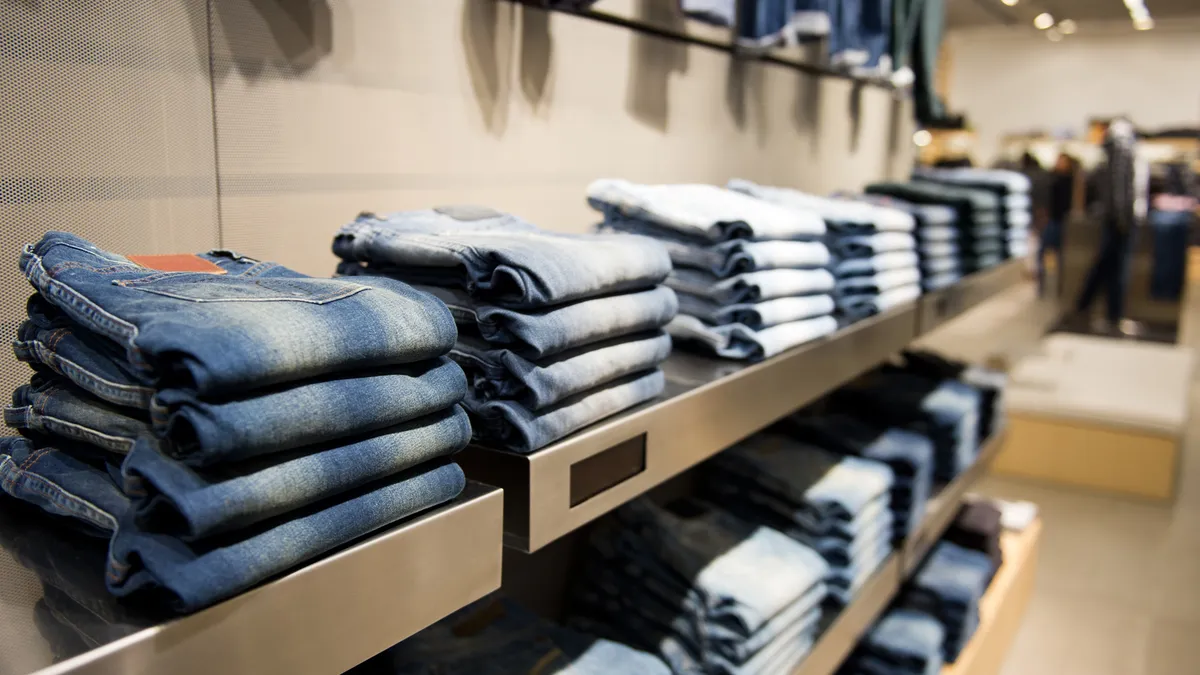Dive Brief:
-
Deep discounts over the holidays and beyond, plus a late-breaking chill in January, helped retailers move through excess inventories, CNBC reports. Inventories were at glut levels in part because of backlogs at West Coast ports.
-
Digging through Q4 reports, CNBC notes that many retailers—Gap, J.C. Penney, Macy’s and others—stated that they were able to work through piled-up inventories, a problem many had noted going into the holidays.
-
Teen retailers in particular have been cycling through outdated, logo-centric clothing; both Abercrombie & Fitch and American Eagle Outfitters in recent quarters have mentioned that those stockpiles are now lower, and that they are selling fresher styles at fewer discounts.
-
Notably, Target had said going into the holidays that its higher Q3 inventory didn’t signal a need for holiday promotions, as other retailers had indicated, but rather a sign that its inventory strategies now in place are effective. In fact, Target said its 34% web sales surge at the holidays were helped by its inventory levels, and now it’s trimming some merchandise to make room to replenish out of stocks.
Dive Insight:
It stands to reason that, as analysts quoted by CNBC conclude, moving through inventories will help retailers pump their prices back up.
But that assumes that the merchandise assortment they’re moving into stores for spring captures the imagination of shoppers, and that retailers aren’t hit by another wave of unseasonable weather, though state-of-the-art weather forecasting should help them prepare for that. Many retailers, with the exception of TJX, have complained in reports that unseasonably warm days left a lot of winter gear on racks over the holidays.
Meanwhile, many consumers are opting to spend on experiences like vacations and eating out rather than on things, with younger consumers especially prone to spending on experiences, according to a PwC survey published last year. That study found that millennials said that 52% of their holiday spending would be experience-related, compared to 39% for older consumers. Research in psychology in recent years is bolstering the idea that experiences hold greater promise than hard goods in giving people longer-lasting feelings of satisfaction.
Then again, maybe such experiences wouldn’t be such an allure if shoppers weren’t subjected to “mass boredom” when it comes to the merchandise on store shelves, wrote retail futurist Doug Stephens on his Retail Prophet blog.
“At the heart of all this brick and mortar boredom lies an outmoded model for how retailers make money,” Stephens wrote earlier this month. “The wholesale to retail model by definition discourages risk. The commitment to per square foot volume of sales as a primary metric of success becomes a straightjacket that impedes any creativity or adventure on the part of a buyer.”
So, unless some of these retailers have addressed that issue, there may be another wave of inventory pile-ups in future earnings reports.









